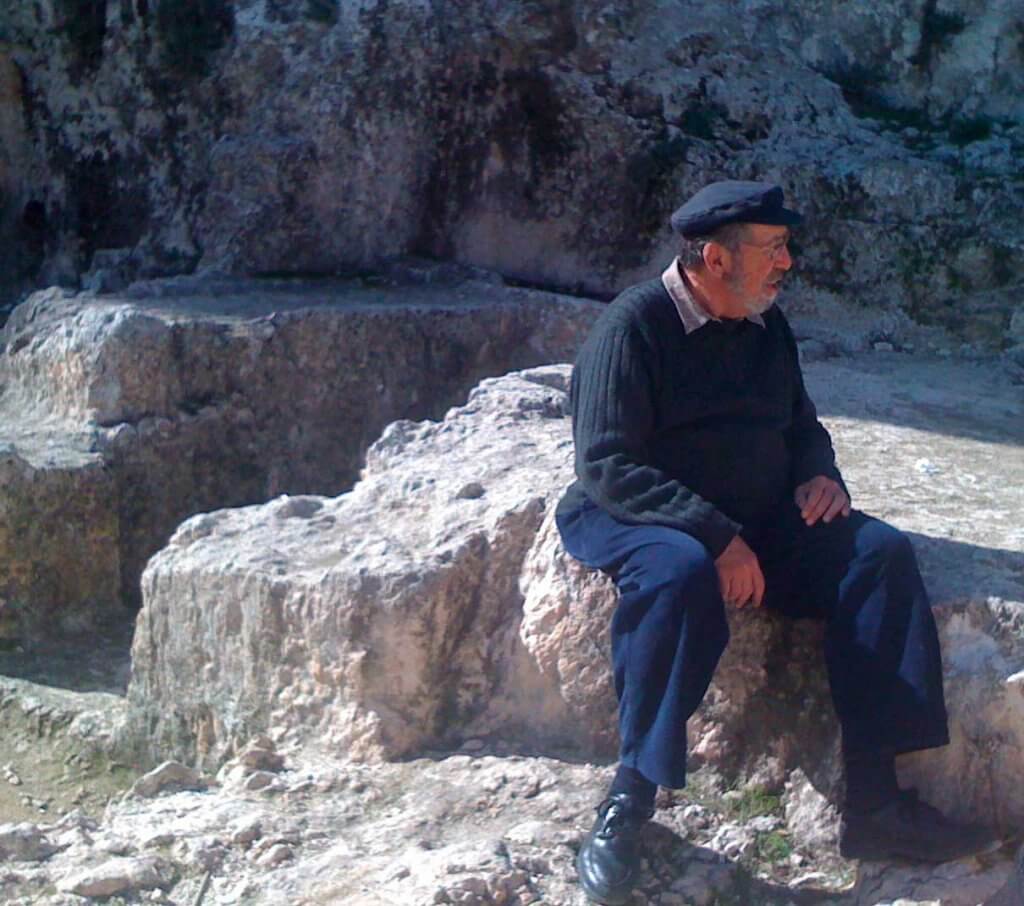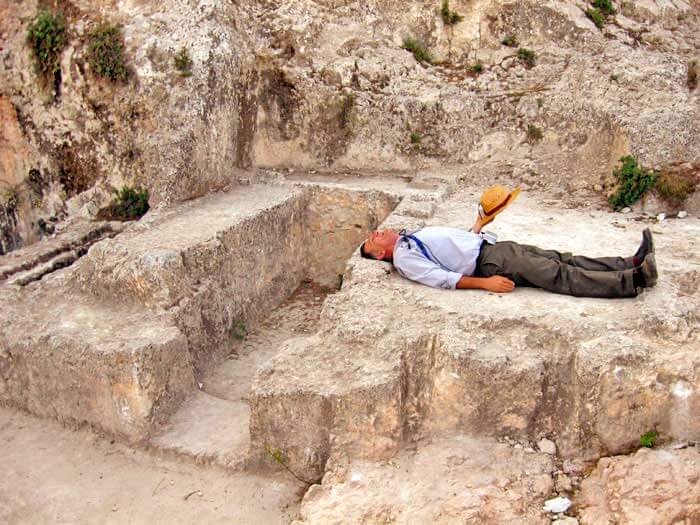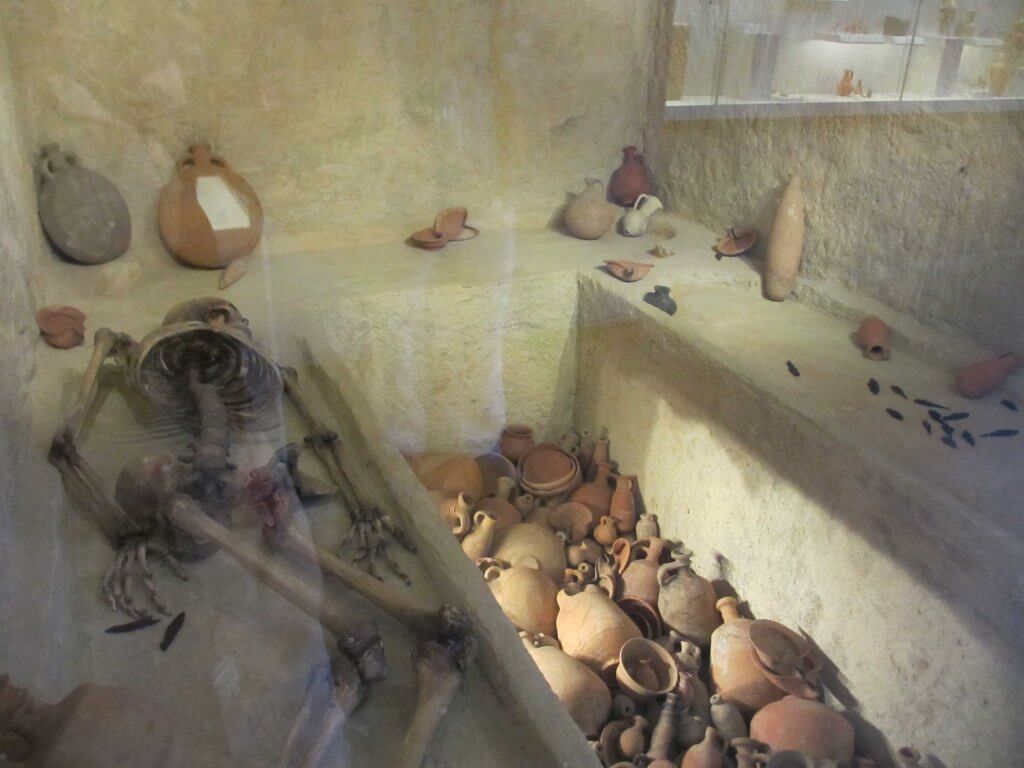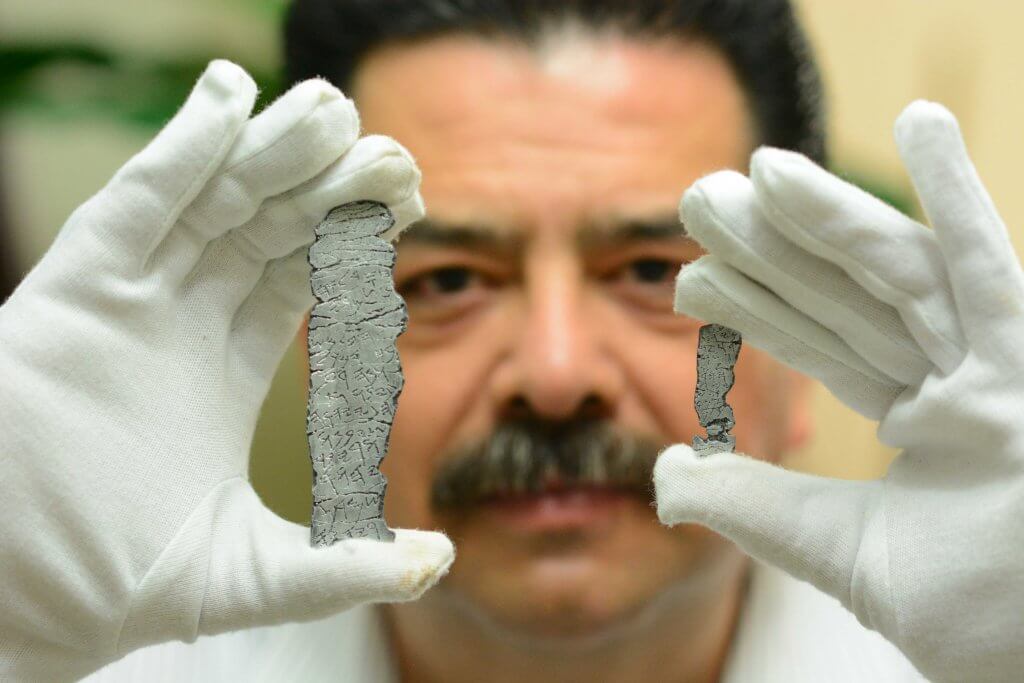Archiology
The Priestly Blessing amazing finding of the oldest pendant
We are intrigued to find evidence or archeological findings related to the Bible.
The priestly blessing pendant finding, is one of the most important discoveries ever made in this field.
How did I find out about this amazing find?
“I saw a necklace really similar to yours at Ketef Hinnom,
near the Old City of Jerusalem”
It is not rare to find parallel designs in the field of art and industry.
As a designer you don’t want to fall into this statistic, rare or common as it may be.
At first, I thought of going for the what-I-don’t-know-can’t harm” strategy,
But then I became curious and protective and wanted to find
the mysterious designer and get to know his collection
My obvious next step was to google “Ketef Hinnom “….
What is the Ketef Hinnom?
Ketef Hinnom is an archaeological site with Judahite burial caves, which were looted over the years and considered to be to be archaeologically sterile.
I like biblical archaeology, it interests me a lot, so I ‘ll keep digging…

Who is the archeologist Gabriel Barkay?
The Israeli archaeologist Professor Gabriel Barkay, is a professor of archaeology at Tel Aviv University. In Ketef Hinnom, he found one of the most important discoveries in his work as an archaeologist.
It all started in an Archeology class for children, which took place in Ketef Hinnom.
During the class, there was a “snoozy” boy (as defined by the archaeologist), who stood out and disturbed Professor Gabriel Barkay.
So that the “snooty boy”, would not interfere with the group’s activities, the archaeologist sent him to one of the empty burial caves to clear the rock surface.

What kind of snooty behavior was it?
Was the child too interested, asked too many questions or did he disturb the group?
One thing is certain: the deceased, who were safe and protected for 2800 years, are no longer resting on their beds at peace.
The boy discovered a full burial cave!!!
Due to the collapse of the ceiling into the cave, its contents have not been discovered for thousands of years.
What was customary form of burial in the time of the kings of Judah?
The site consists of a series of rock-hewn burial chambers based on natural caverns. In each cave, there are hewn bunks, on which the dead was placed and below them a large pit.

The bunks, in the Ketef Hinnom burial caves, are special in their splendor, as they include “headboards”: rock-hewn sockets, designed to stabilize the head of the deceased on the bunk.
The dead man was placed on a bunk with his face up and was surrounded by offerings and amulets, designed to “accompany” him to the next world.
After completing the first stage of burial, the cave opening was sealed.

For a year the dead man lay on the bunk, until only bones remained from his body.
At the end of the year, family members of the deceased were gathered to his grave, and after the ceremony, the remains and his offerings were transferred to the large pit below the bunk.
This pit contains the bones of the dead of the whole family for generations and their offerings.
“All that generation were gathered unto their fathers” The book of Judges chapter 2
That’s it. Now the whole family is together, and everyone can get to the holiday dinner.
How did it happen that one burial cave in Ketef Hinnom was found intact, when all the others were looted?
All the pits in Ketef Hinnom, to which the bones and offerings were collected, were found empty, as stated, due to the robbery of graves, except for one pit in one of the caves that was discovered intact.
The circumstances of the preservation of this pit are interesting: the ceiling of the pit, which distinguished it from the bunk above it, was cut to its full width at some point, and its lower part fell into the interior of the pit and buried its contents.
Its upper part, however, remains intact. It seems that as a result the grave robbers concluded that the grave was empty, as they did not know that all its contents were actually buried under the “floor”.
Also during the excavations conducted by Prof. Barkay, it was initially thought that Ketef Hinnom burial caves were empty.
Back to the young and Israeli Indiana Jones, we understand that he not only cleared the rock face, but also dug inside and found the discovery of a lifetime for the archaeologist, Prof. Gabriel Barkay.
What was found in the burial cave in Ketef Hinnom?
An impressive find was discovered in the grave, that included the bones of about 95 dead and thousands of offering items such as jewelry, urns, and even amulets.
The most significant find found, was two pieces of silver, which at first looked like two cigarette butts.
Later on, they realized that these were rolled silver plates, with a space in the center, maybe to pass a thread through it.
And finally, after 3 years, the researchers were able to find a suitable technology for opening the plates, without damaging them.
The inscription was revealed

What do the Ketef Hinnom scrolls say?
The Priestly Blessing, in a shorter version than in the Book of Numbers:
“The LORD bless you and keep you:
The LORD lift up his countenance upon you
and give you peace.”
What are the words of the Priestly Blessing?
The Lord said to Moses, “Tell Aaron and his sons, ‘This is how you are to bless the Israelites. Say to them:
“The Lord bless you
and keep you;
the Lord make his face shine on you
and be gracious to you;
the Lord turn his face toward you
and give you peace.”’
“So they will put my name on the Israelites, and I will bless them.”
(Numbers 6:22-27)
The Ketef Hinnom scrolls, are the oldest surviving texts currently known from the Hebrew bible, dated to 600 BC and has been described as “one of most significant discoveries ever made” for biblical studies.
What are the engraved signs on the Ketef Hinnom scrolls

The inscription on the scrolls, was engraved in ancient Hebrew script. This script is also called: Paleo-Hebrew alphabet. It was in common use in the kingdoms of Israel and Judah throughout the 8th and 7th centuries BCE
The text, of the Priestly Blessing, was undoubtedly significant for the people back then.
They chose to wear the text, that was important to them, as an amulet or as a prayer scroll.
Well, the customer was right. Similar designs.
When I designed the jewel, I thought of the Dead Sea Scrolls.
Still, in this case, It makes me happy that I designed a piece of jewelry
similar to a piece, that was worn 2600 years ago.

